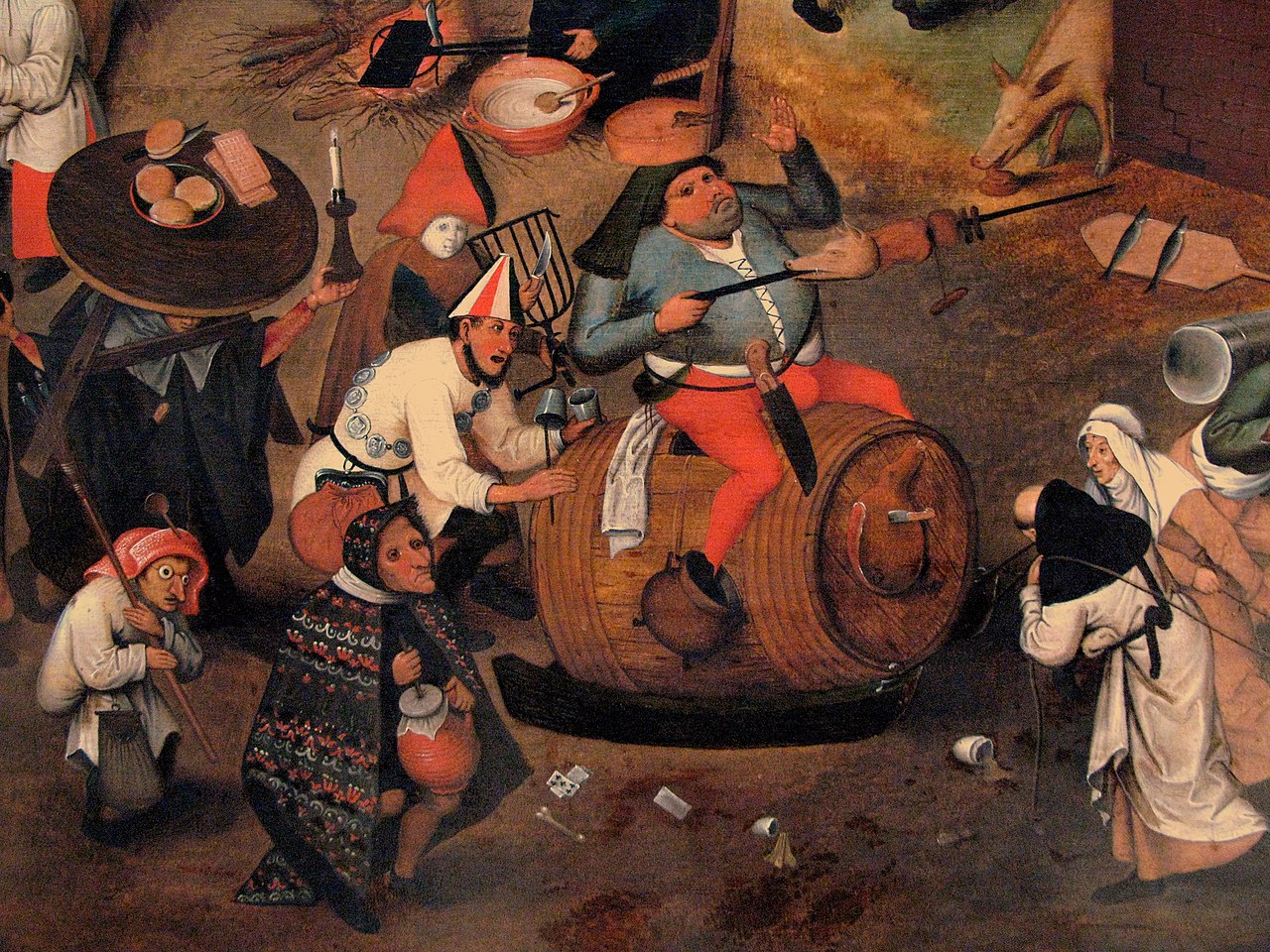
* * * *
 It is indeed time for Ash Wednesday and Lent, again.
It is indeed time for Ash Wednesday and Lent, again.
As noted in The beginning of Lent – 2018, the whole idea of Lent – as a kind of mini-Wandering in the Wilderness – started back in the time of Moses. That’s when he led the Children of Israel through the original Exodus, as detailed later in Nehemiah, at 9:12-21. For example, “By a pillar of cloud you led them in the day, and by a pillar of fire in the night to light for them the way in which they should go.”
Now we don’t have an actual “pillar of cloud” by day, or a “pillar of fire in the night” to light our way. But we do have the example set by Moses. Then too, “Forty years you sustained them in the wilderness, and they lacked nothing. Their clothes did not wear out and their feet did not swell.” Which brings up the whole topic of Ash Wednesday and the Season of Lent:
According to the canonical gospels of Matthew, Mark and Luke, Jesus Christ spent 40 days fasting in the desert, where he endured temptation by Satan. Lent originated as a mirroring of this, fasting 40 days as preparation for Easter.
See Wikipedia, On Ash Wednesday and Lent, and also Lent 101 – The Upper Room.
So Moses and the Children of Israel wandered in the Wilderness for 40 years, and Jesus did His own wandering, during which He was tempted by Satan. Thus: “There is a strong biblical base for fasting, particularly during the 40 days of Lent leading to the celebration of Easter. Jesus, as part of his spiritual preparation, went into the wilderness and fasted 40 days and 40 nights.”
 Now, about that “Fight Between Carnival and Lent.” As Wikipedia noted, the battle between the figures “Carnival” – given a modern-day illustration at left – and Lent “was an important event in community life in early modern Europe.” Lent was characterized by “enforced abstinence and the concomitant spiritual purification,” but to good cause. That is, “in preparation for Easter.” Which itself is a metaphor, in that Bruegel the Elder‘s painting is “rich in allegories and symbolisms that have been long studied.” In the end, Lent – and Easter – ultimately triumph.
Now, about that “Fight Between Carnival and Lent.” As Wikipedia noted, the battle between the figures “Carnival” – given a modern-day illustration at left – and Lent “was an important event in community life in early modern Europe.” Lent was characterized by “enforced abstinence and the concomitant spiritual purification,” but to good cause. That is, “in preparation for Easter.” Which itself is a metaphor, in that Bruegel the Elder‘s painting is “rich in allegories and symbolisms that have been long studied.” In the end, Lent – and Easter – ultimately triumph.
That is, they triumph over the spectacle of people “guided by a fool, and not by reason” – as symbolized in the painting – along with a burning torch, “symbolic of dispute and destruction.” (Hmmmm…) In short, Bruegel‘s painting “is often read as the triumph of Lent, since the figure of Carnival seems to bid farewell with his left hand and his eyes lifted to the sky.”
All of which could well be metaphors for some of what’s going on these days…
Another note from The beginning of Lent – 2018: The “Christian life itself is a pilgrimage, and the 40 days of Lent can be a kind of dress rehearsal, or ‘full-scale practice.’ (Where it’s important to remember the happy ending.)” And then there’s this additional side note:
There are actually 46 days of Lent. That is, 46 days between Ash Wednesday and Easter Sunday. That’s because Sundays don’t count in the calculation. Sundays in Lent are essentially “days off,” when you can still enjoy whatever it is you’ve “given up.” But somehow that fact got overlooked by the writers and/or producers of 40 Days and 40 Nights, the “2002 romantic comedy film.” That film portrayed the main character “during a period of abstinence from any sexual contact for the duration of Lent.” But as noted, the main character “could have taken Sundays off.” Which again just goes to show that – sometimes at least:
It pays to read and study the Bible!
* * * *

* * * *
The upper image is courtesy of the “Fight Between Carnival” link in the Wikipedia article on Lent. The full caption: “‘The Fight Between Carnival and Lent‘ by Pieter Bruegel the Elder (circa 1558–1559).” Note the upper image shows a mere “detail;” see the whole painting at Wikipedia.
For additional information on the upcoming season – during which I’ll do further posts on the appropriate subjects – see My Lenten meditation and/or On Ash Wednesday and Lent – 2016. Or for suggestions, see 10 Things To Give Up For Lent In 2019.
Re: The “modern-day illustration at left.” It’s from Ash Wednesday and Lent – 2016, which noted Lent is devoted to “prayer, penance, repentance of sins, alms-giving, atonement and self-denial.
But that season of self-denial is preceded by “Fat Tuesday.” That’s the day before Ash Wednesday… The French term for Fat Tuesday is Mardi Gras, and Mardi Gras is now a generic term for “Let’s Party!!”
Wikipedia added, “Popular practices on Mardi Gras include wearing masks and costumes, overturning social conventions, dancing, sports competitions, parades, debauchery, etc.”
The lower image is courtesy of 40 Days and 40 Nights (2002) – IMDb. A side note: I Googled “film 40 days and 40 nights Sundays off,” to see if any Hollywood types had caught on to the “Sundays off” aspect of Lent. From what I could see, “Apparently not.” For more information, see Why Sundays Don’t Count During Lent | Guideposts.